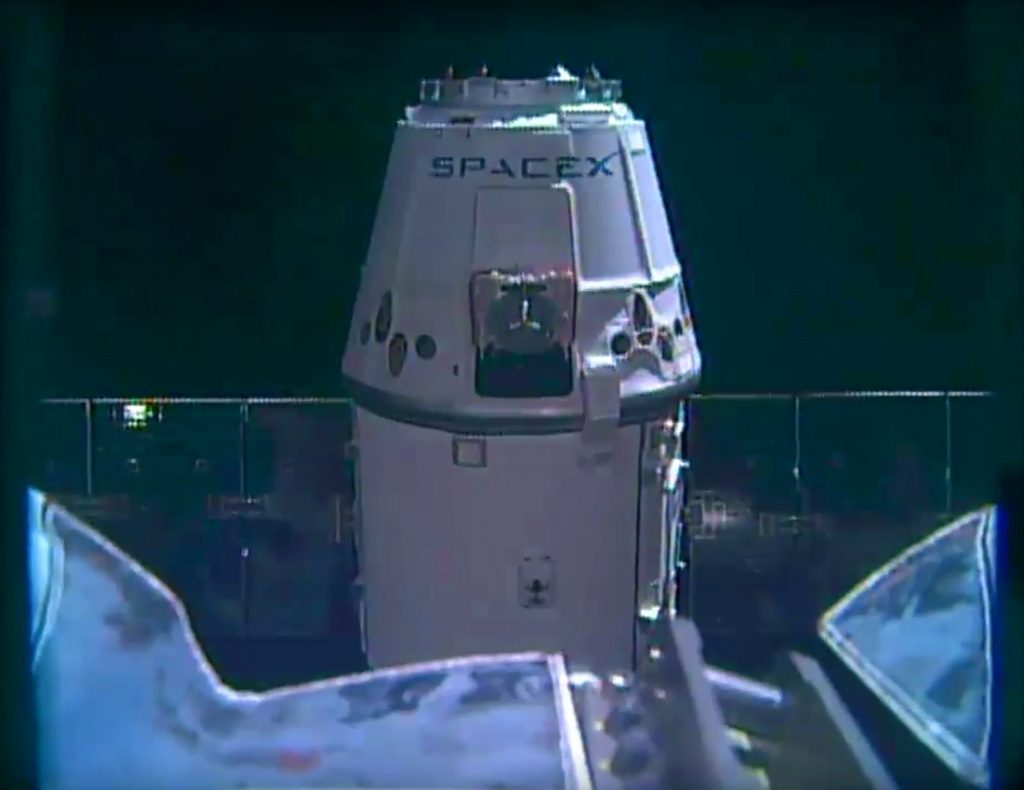
SpaceX’s unmanned Dragon cargo ship, carrying lettuce seeds, lab mice and an inflatable pop-up room, arrived April 10 at a crowded International Space Station where six spacecraft are now docked. British astronaut Tim Peake reached out with the station’s robotic arm and grappled the Dragon, carrying its nearly 7,000 pounds (3,175 kilograms) of gear, at 7:23 am (1123 GMT).
/ AFP PHOTO /
MIAMI,United States (AFP) — SpaceX chief Elon Musk announced Wednesday that he will send an unmanned spaceship to Mars as early as 2018, as part of his quest to colonize the Red Planet some day.
Few details of the plan were released by Musk, the Internet entrepreneur who rose to fame as the cofounder of PayPal and currently also runs Tesla Motors.
“Planning to send Dragon to Mars as soon as 2018,” Musk announced on Twitter.
“Red Dragons will inform overall Mars architecture details to come.”
He appeared to be referring to an upgraded version of the California-based company’s Dragon cargo capsule, which is currently used as an unmanned spacecraft to shuttle food and supplies to and from the International Space Station.
“Dragon 2 is designed to be able to land anywhere in the solar system. Red Dragon Mars mission is the first test flight,” Musk tweeted.
However, there were no immediate plans for people to hitch a ride, he noted.
“But wouldn’t recommend transporting astronauts beyond Earth-moon region. Wouldn’t be fun for longer journeys,” he wrote.
The internal volume of the capsule is about the size of a sports utility vehicle, he added.
NASA is studying the effects of long-term spaceflight on the human body and has announced plans to send people to Mars by the 2030s.
However, it remains unclear how people would survive the long journey of a year or more, needing adequate food and water and protection from space radiation during the trip.
Musk has previously spoken of his vision of creating a colony of a million earthlings on Mars, in order to make humanity “multi-planetary” and avoid the risk of extinction on Earth.
His most recent feats include managing to return the first stage of SpaceX’s Falcon 9 rockets to an upright landing on water and on solid ground, as part of his effort to make rockets as reusable as airplanes.
© 1994-2016 Agence France-Presse







